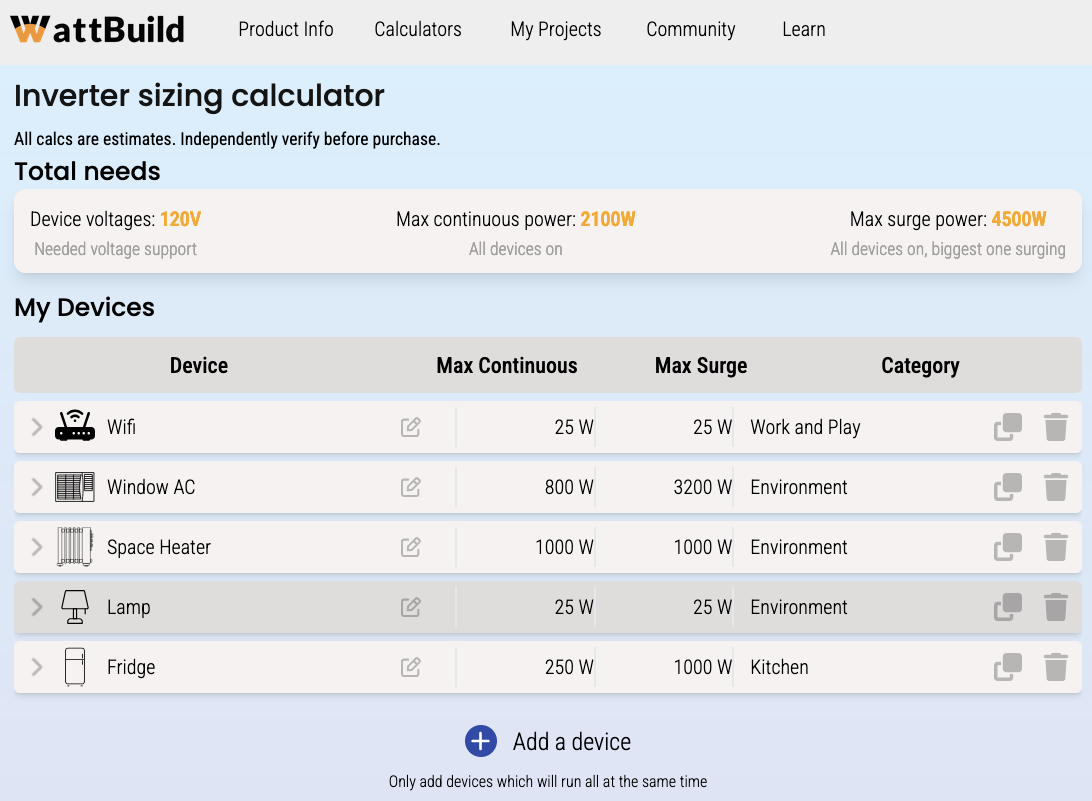Some items could be mutually exclusive? Like you're never going to be running the space heater and the window AC at the same time.
SolarDIY
SolarDIY is a vibrant community dedicated to embracing the power of solar energy. Here, we encourage you to showcase your ingenious ideas, innovative projects, and inspiring stories, while also seeking valuable advice, fresh ideas, and fostering meaningful connections.
Our passion lies in witnessing the remarkable achievements of individuals who have harnessed the potential of solar energy. Whether you have successfully wired your entire house with solar panels, created a portable solar-powered generator, or crafted an efficient solar pool heater, we are eager to learn from your experiences and celebrate your accomplishments.
Join us on this empowering journey as we explore the endless possibilities of solar energy and inspire one another to make a positive impact on our environment and our lives. Together, we can unlock the full potential of solar power and shape a sustainable future.
Share your DIY solar projects, exchange knowledge, and let your creativity shine!
That's a good point. I'd have to think about how to design the UI in a way that doesn't add too much complexity while accommodating this kind of situation.
In practice for now its up to the user to choose their highest drawing scenario, whether that's a summer configuration or a winter one.
Doesn't a space heater's requirements go down after getting the heating elements to temp?
Since this is not a battery life calculator, the metric to track is the max continuous power draw. Even if the draw lowers after initial heating, the inverter must still be able to handle the initial ramp up.
Even if that's your intent, listing max continuous power draw at the same ramp up power draw is inaccurate and gives people misinformation.
If your goal is simply to show the ability of the inverter to handle the max wattage you can throw at it, removing max continuous wattage is a smarter decision.
You show your goal, but also you only need to worry about having one accurate metric.
It is a useful tool for figuring out needs based on what's going to be running. But it seems too DIBuy instead of DIY. The results say inverters but they are all plug and play all in one systems. Not DIY.
Now I understand that popping prebuilt systems in the results is easier than building a DB of the constantly changing variety of batteries, inverters and charge controllers. But right now it seems all buy and no build.
Interesting point, I guess DIY means something different to different people. For me, DIY means anything that doesn't require a professional installer.
To your point though, I do have a couple of EG4 inverters included in the results at the upper capability end. Sounds like you'd be interested in seeing more separate inverters than just those few I currently have. Adding those isn't too difficult, I will just need to make it clear to the audience which items require additional parts to be a functioning system.
My DIY is normally "build it from scratch" instead of "buy a thing that does it for you."
The way you have it listed they are all "inverters". But an inverter is only one component of a solar system. In fact it's not even part of a DC only system. Most of what you have are complete systems minus the solar panels. Way more than an inverter.
